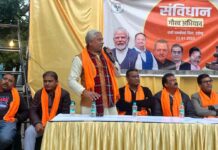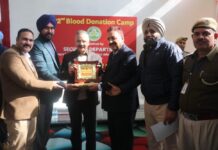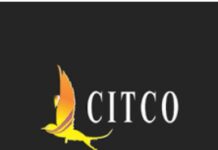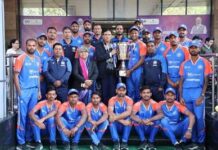How contract farming is a win-win for both agri industry and farmers
India has emerged as a major exporter of French Fries, which owes no less to companies procuring potato directly from growers and deepening farmer engagement
Harish Damodaran
In 1992, the American processed food company, Lamb Weston, began importing frozen French Fries (FF) for supplying to star hotels in India. The Canadian multinational McCain Foods followed four years later, as sole supplier to McDonald’s that had opened its first restaurant in the country.
As consumption of the crispy straight-cut deep-fried potatoes grew, so did imports – crossing 5,000 tonnes annually by the mid-2000s and peaking at 7,863 tonnes in 2010-11 (April-March).
But cut to 2023-24, when not only have imports practically ceased, India actually exported 135,877 tonnes of FF valued at Rs 1,478.73 crore. During April-October 2024, exports were 106,506 tonnes and worth Rs 1,056.92 crore.
This turnaround – from an importer to an exporter of a highly western fast-food product – has been thanks to opportunity-seizing domestic entrepreneurs, who also harnessed the potential of processing potato varieties suitable for making FF and cultivating them in India.
Indian FF exports are mostly to Southeast Asia (Philippines, Thailand, Malaysia, Indonesia and Vietnam), Middle East (Saudi Arabia, UAE and Oman) and even Japan and Taiwan. “We have become an alternative supplier to these markets that previously imported only from Europe and the US,” noted Haresh Karamchandani, managing director of HyFun Foods Pvt. Ltd.
The Ahmedabad-headquartered company accounted for about 85,000 out of the 175,000 tonnes of FF – plus another 8,000 out of 12,000 tonnes of potato hash browns – exported from India in the last calendar year. Other major exporters are Iscon Balaji Foods, Funwave Foods and ChillFill Foods (all from Gujarat) and the US-based J.R. Simplot (it also has a plant in the state).
India’s export of FF exceeds its estimated domestic consumption of 100,000 tonnes. Roughly 80% of that comprises sales to businesses (the likes of McDonald’s, KFC and Burger King) at an average Rs 125/kg realisation and the rest to the retail segment at Rs 200/kg, adding to a total market size of Rs 1,400 crore.
Table vs Processing-grade
India’s potato production, at 60-odd million tonnes (mt), is next only to China’s 95 mt.
Much of that is, however, of normal potatoes used for cooking and home consumption. These “table” varieties contain more moisture and hardly 15-16% dry matter. They also have high reducing sugars (primarily glucose), which accumulate when the harvested tubers are cold-stored at 2-4 degrees Celsius to prevent sprouting. The excess sugar causes darkening of the FF or chips on frying.
Processing-grade potato varieties have 20-23% dry matter (enabling higher FF/chips recovery with lower energy and oil consumption) and less than 0.1% reducing sugars on fresh weight basis (resulting in a lighter colour of the finished product).
Such varieties include Santana, Innovator, Kennebec, Kufri Frysona and Kufri FryoM for FF, and Lady Rosetta and Kufri Chipsona-1, 2, 3 and 4 for chips. While the breeders of Santana (STET), Innovator (HZPC) and Lady Rosetta (Meijer) are all Netherlands companies, the Kufri varieties have been developed by the government-owned Central Potato Research Institute, Shimla.
Around 1.8 kg of potato is required to produce 1 kg of FF, while it is 1.5 kg for specialty products (like hash browns, burger patties, nuggets and aloo tikki) and 6 kg in dehydrated potato flakes (used by bhujia snack manufacturers such as Bikanervala, Balaji Wafers and Bikaji Foods).
Contract farming model
HyFun Foods, which recorded Rs 1,320 crore sales in 2023-24, has invested nearly Rs 700 crore at its plants in Gujarat’s Mehsana district for producing 17 tonnes/hour of FF, 2.7 tonnes/hour of specialties and 3.6 tonnes/hour of potato flakes.
But creating processing capacities is easier than ensuring adequate availability of raw produce for their year-round operation. That’s where contract farming comes in. In the 2023-24 season – potato is sown in October-November and harvested in February-March – HyFun procured 300,000 tonnes from 6,000 farmers in Banaskantha, Sabarkantha, Gandhinagar and Mehsana districts of Gujarat.
For the current season, the company plans to buy 400,000 tonnes from 7,250 farmers growing in 30,000 acres of Gujarat, 1,500 acres of Madhya Pradesh and 500 acres of Uttar Pradesh. “Our target is one million tonnes procurement from 20,000 farmers over 80,000 acres by 2027-28,” said S. Soundararadjane, head of HyFarm, the farmer connect arm of HyFun.
HyFun is offering farmers Rs 13.8 per kg for their crop to be harvested from next month. This price, contracted in September prior to planting and payable at the farmgate, is for potatoes of over 40 mm diameter – large oblong-shaped tubers ideal to make FFs. The company also accepts smaller-sized tubers for processing into flakes – at a lower Rs 8/kg rate.
“Contract farming works well, as there is no uncertainty over price or marketing of our produce. We can focus on production and improving crop yield as well as quality,” Alpesh Navinbhai Patel, who cultivates the Santana variety on 180 acres (21 of his own and the balance leased in), pointed out. The 43-year-old is among many in Sonasan village of Sabarkantha’s Prantij taluka, farming potato on a total of 3,900 acres and, within that, 3,000 acres exclusively for HyFun.
Seed to shelf
Contract farming is beyond just assured price and procurement. It’s also about deepening farmer engagement at the farm itself.
HyFun provides good quality disease-free seeds of Santana, Frysona and FryoM potato to its farmers. It sources their mini-tubers grown in tissue-culture labs by seed-potato companies: ITC Technico Agri Sciences, Mahindra HZPC and KF Biotech. These are multiplied first in 250-plus acres of HyFun’s corporate farms and then over two generations through contract seed growers in Punjab, Haryana and UP. The third-generation seed is what farmers like Patel plant for supplying back as commercial potato to HyFun.
“We will have our own greenhouse facility in Punjab by 2026 for producing mini-tubers, using soilless aeroponics and sterilised cocopeat media technology. It would halve our cost of generation-zero planting material,” claimed Soundararadjane.
HyFun is also working with farmers to bring down their cost of cultivation. Patel grows guar and dhaincha as green manure legume crops over 60-65 days during the monsoon to boost the organic carbon and nutrient content in his soil before sowing potato. Last year, he harvested an average 13.5 tonnes of potato per acre. At Rs 13.8/kg price and production cost of Rs 85,000-90,000, his per-acre profit comes to Rs 96,300-101,300.
This season, HyFun has conducted “HyFarm paathshala” demonstrations for planting seed-potatoes in two rows within a 48-inch bed width (instead of the usual four-rows and 60-inch geometry) and also at 5.5-6 inches depth (against 4.5 inches now). These have been shown to reduce the requirement of seed (from 25 to 19 bags per acre), fertilisers (by 20%) and water (by 50%, due to only one lateral drip line needed between two rows, compared to two between four), without affecting yields.
“At Rs 1,560/bag, my seed cost alone today is Rs 39,000 per acre. If I use 6 bags less of seed, 2 bags each of di-ammonium phosphate and muriate of potash (from 3), and 2 bags of urea (from 2.5), it translates into savings of Rs 12,500 per acre. That’s as good as being paid Rs 0.9/kg more for my potato,” added Patel.
Going forward, sourcing produce directly from farmers, rather than middlemen, is something that agri-companies in general may increasingly have to do. The seed-to-shelf approach is relevant, especially when selling in global markets where cost competitiveness and product quality matter alike.
















